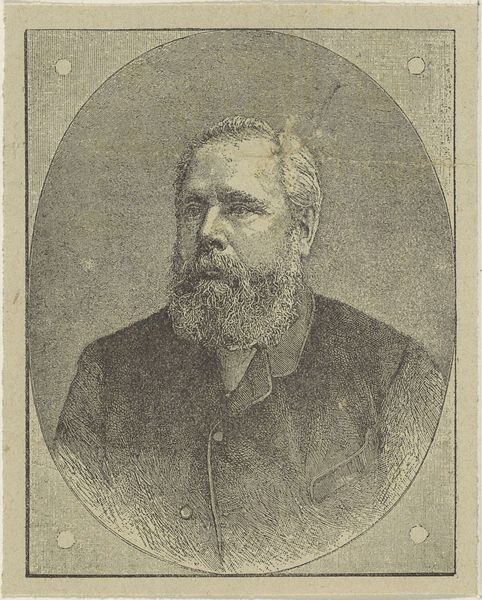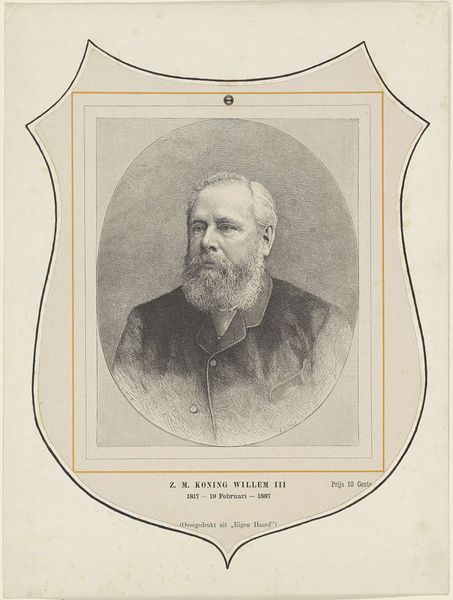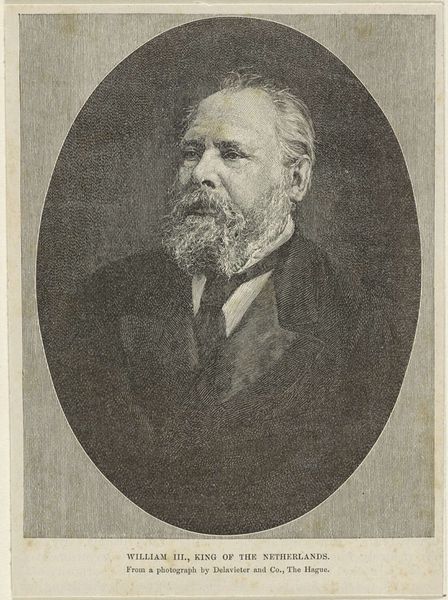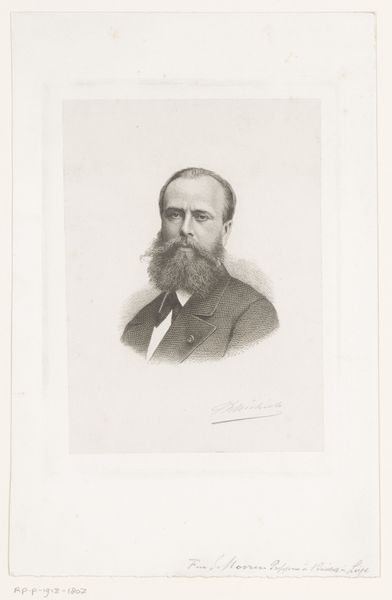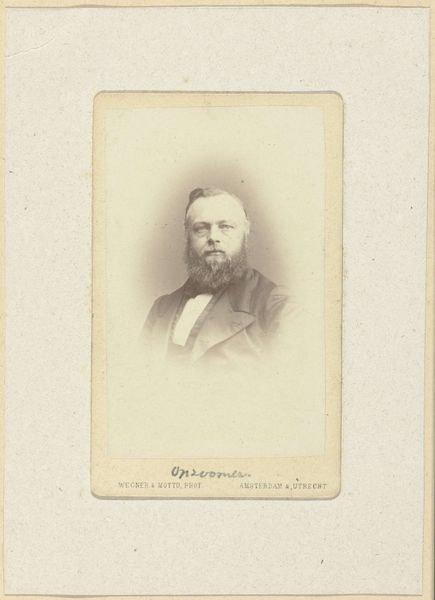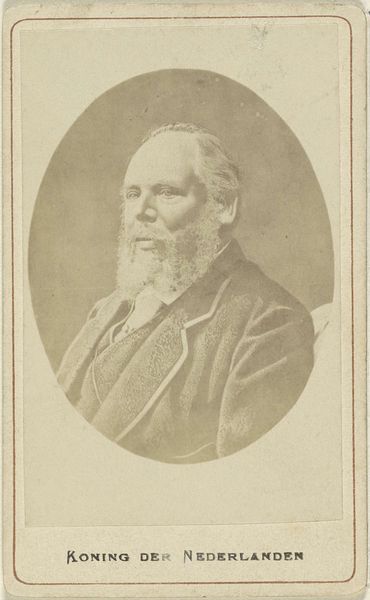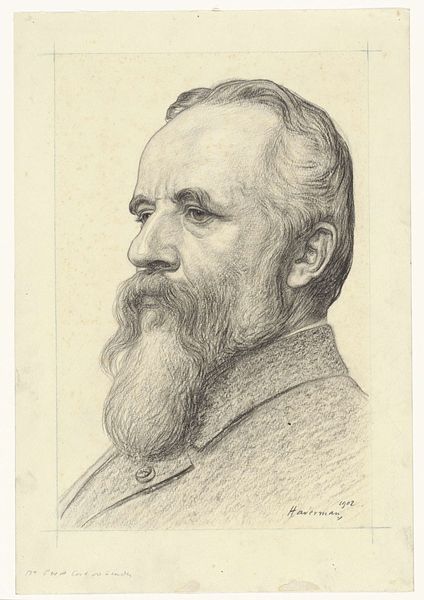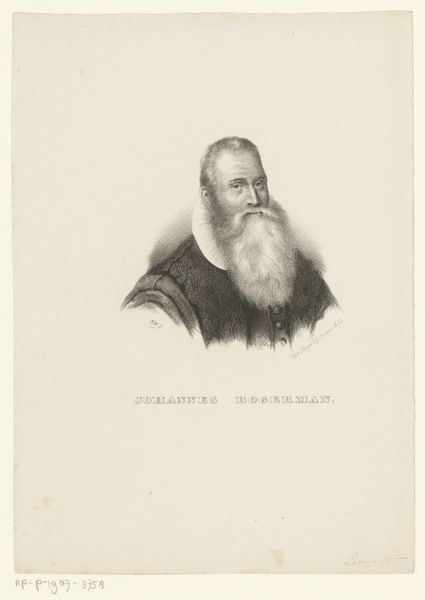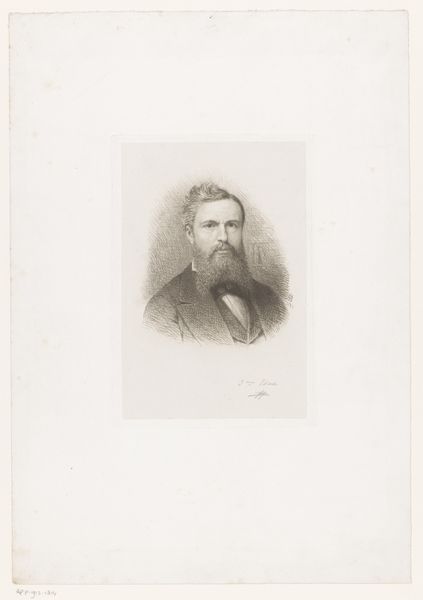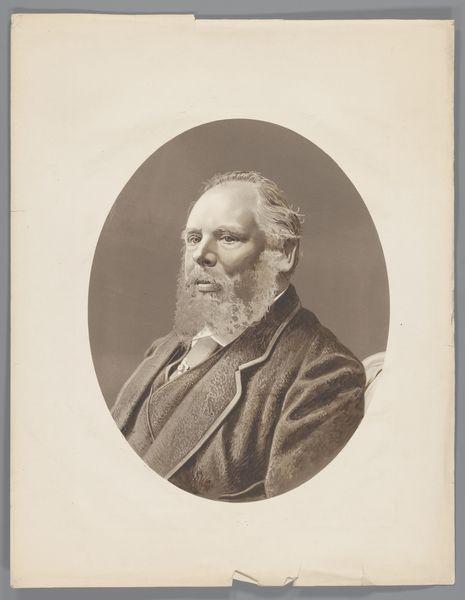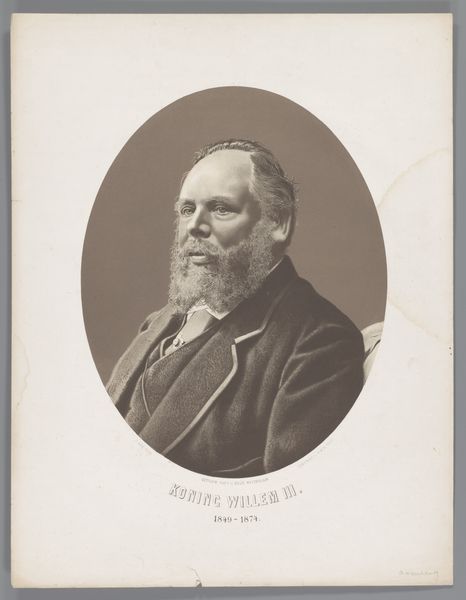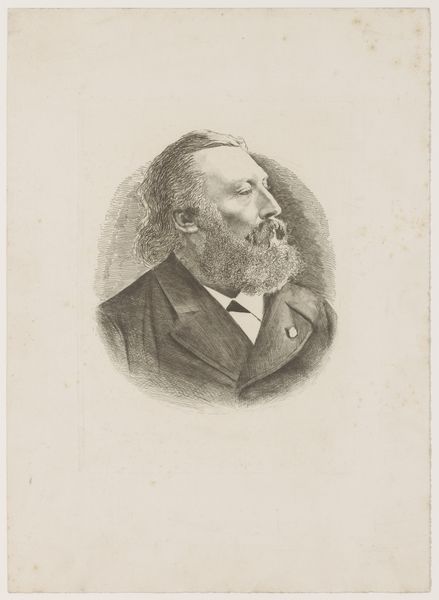
print, engraving
#
portrait
# print
#
historical photography
#
19th century
#
history-painting
#
engraving
#
realism
Dimensions: height 269 mm, width 204 mm
Copyright: Rijks Museum: Open Domain
This is a portrait of Willem III, King of the Netherlands, made by E. & A. Tilly, using a technique called wood engraving. The image is composed of thousands of tiny lines carved into the surface of a block of wood. The density of these lines creates the illusion of light and shadow, defining the King's features and the texture of his beard. Wood engraving is a demanding process, requiring great skill and precision to execute. Unlike traditional woodcuts, which use softer woods, wood engraving employs the end grain of a very hard wood, allowing for finer detail. The rise of wood engraving in the 19th century was closely linked to the development of mass media. It became a primary method for reproducing images in books, newspapers, and magazines. In this context, this portrait of King Willem III reflects the way that technological advances were used to disseminate images of power and authority. Looking closely at the artwork, we can appreciate how materials, making, and social context combine to give it meaning, challenging conventional hierarchies between craft and fine art.
Comments
No comments
Be the first to comment and join the conversation on the ultimate creative platform.
